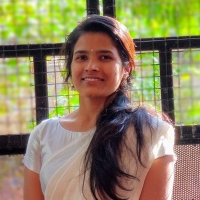International Journal of Image, Graphics and Signal Processing (IJIGSP)
IJIGSP Vol. 14, No. 2, 8 Apr. 2022
Cover page and Table of Contents: PDF (size: 834KB)
Indian Sign Language Recognition Using 2-D Convolution Neural Network and Graphical User Interface
Full Text (PDF, 834KB), PP.61-73
Views: 0 Downloads: 0
Author(s)
Index Terms
Indian Sign language (ISL), Convolution Neural Network (CNN), Database Design, 2D, and Sign Language.
Abstract
The emergence of the sign Language recollection method has a great effect on the day-to-day livings of human beings with hearing disabled individuals utilizing signs to speak with others. Much the same as verbally communicated in dialects, there is no general language as each nation has its communication in language, so every nation has its vernacular of gesture-based communication and in India, they utilize Indian Sign Language (ISL). Over the most recent couple of years, analysts have investigated the computerization of ISL. Here we developed the custom database for 26 English letters and each Letter narrates the 5 times by each person. Train the dataset using 2D CNN and create GUI for recognition. A few endeavors have been made in India and different nations. We attempt to investigate and dissect the ISL that has been made with the mechanization of communication through signing and motion acknowledgment. We attempted to investigate the difficulties that come in the ongoing sign acknowledgment framework. The testing accuracy of the proposed work is 95% and 95% for the validation accuracy.
Cite This Paper
Shashidhar R, Arunakumari B. N., A S Manjunath, Roopa M, " Indian Sign Language Recognition Using 2-D Convolution Neural Network and Graphical User Interface", International Journal of Image, Graphics and Signal Processing(IJIGSP), Vol.14, No.2, pp. 61-73, 2022. DOI: 10.5815/ijigsp.2022.02.06
Reference
[1] Mike Wu and Ravin Balakrishnan. 2003. multi-finger and whole hand gestural interaction techniques for multi-user tabletop displays. In Proceedings of the 16th annual ACM symposium on User interface software and technology (UIST '03). Association for Computing Machinery, New York, NY, USA, 193–202. DOI: https://doi.org/10.1145/964696.964718.
[2] Didier Casalta, Yves Guiard, and Michel Beaudouin-Lafon. 1999. Evaluating two-handed input techniques: rectangle editing and navigation. In CHI '99 Extended Abstracts on Human Factors in Computing Systems (CHI EA '99). Association for Computing Machinery, New York, NY, USA, 236–237. DOI: https://doi.org/10.1145/632716.632862.
[3] Syed Mohammad Abid Hasan, Kwanghee Ko, Depth edge detection by image-based smoothing and morphological operations, Journal of Computational Design and Engineering, Volume 3, Issue 3, July 2016, Pages 191–197, https://doi.org/10.1016/j.jcde.2016.02.002
[4] Tongping Shen, Fangliang Huang, and Li Jin. 2019. An Improved Edge Detection Algorithm for Noisy Images. In Proceedings of the 2019 International Conference on Artificial Intelligence and Computer Science (AICS 2019). Association for Computing Machinery, New York NY, USA, 84–88. DOI: https://doi.org/10.1145/3349341.3349373.
[5] Nanda Maulina Firdaus and Erdefi Rakun. 2019. Recognizing fingerspelling in SIBI (sistem isyarat bahasa Indonesia) using OpenPose and elliptical fourier descriptor. In Proceedings of the International Conference on Advanced Information Science and System (AISS '19). Association for Computing Machinery, New York, NY, USA. Article 14, 1–6. DOI: https://doi.org/10.1145/3373477.3373491
[6] Sener, S., Unel, M. Affine invariant fitting of algebraic curves using Fourier descriptors. Pattern Anal Applic 8, 72–83 (2005). https://doi.org/10.1007/s10044-005-0245-6
[7] Cheok, M.J., Omar, Z. & Jaward, M.H. A review of hand gesture and sign language recognition techniques. Int. J. Mach. Learn. & Cyber. 10, 131–153 (2019). https://doi.org/10.1007/s13042-017-0705-5.
[8] Ashutosh Samantaray, Sanjaya Kumar Nayak, Ashis Kumar Mishra"Hand Gesture Recognition using Computer Vision" International Journal of Scientific & Engineering Research, Volume 4, Issue 6, June 2013 ISSN 2229-5518
[9] Jung In Koh, Josh Cherian, Paul Taele, and Tracy Hammond. 2019. Developing a Hand Gesture Recognition System for Mapping Symbolic Hand Gestures to Analogous Emojis in Computer-Mediated Communication. ACM Trans. Interact. Intell. Syst. 9, 1, Article 6 (February 2019), 35 pages. DOI: https://doi.org/10.1145/3297277
[10] Yale Song, David Demirdjian, and Randall Davis. 2012. Continuous body and hand gesture recognition for natural human-computer interaction. ACM Trans. Interact. Intell. Syst. 2, 1, Article 5 (March 2012), 28 pages. DOI: https://doi.org/10.1145/2133366.2133371
[11] Wei Huang and Yuting Zhang. 2020. Application of Hidden Markov Chain and Artificial Neural Networks in Music Recognition and Classification. In Proceedings of 2020 the 6th International Conference on Computing and Data Engineering (ICCDE 2020). Association for Computing Machinery, New York, NY, USA, 49–53. DOI: https://doi.org/10.1145/3379247.3379276
[12] Bindu Verma and Ayesha Choudhary. 2018. Dynamic Hand Gesture Recognition using Convolutional Neural Network with RGB-D Fusion. In Proceedings of the 11th Indian Conference on Computer Vision, Graphics and Image Processing (ICVGIP 2018). Association for Computing Machinery, New York, NY, USA, Article 67, 1–8. DOI: https://doi.org/10.1145/3293353.3293421
[13] Shanta, Shirin Sultana et al. “Bangla Sign Language Detection Using SIFT and CNN.” 2018 9th International Conference on Computing, Communication and Networking Technologies (ICCCNT) (2018): 1-6.
[14] Lamptey K. Odartey, Yonfeng Huang, Effah E. Asantewaa, and Promise R. Agbedanu. 2019. Ghanaian Sign Language Recognition Using Deep Learning. In Proceedings of the 2019 the International Conference on Pattern Recognition and Artificial Intelligence (PRAI '19). Association for Computing Machinery, New York, NY, USA, 81–86. DOI: https://doi.org/10.1145/3357777.3357784
[15] N. Krishnaraj, M. G.Kavitha, T. Jayasankar, K. Vinoth Kumar "A Glove Based Approach to Recognize Indian Sign Languages" International Journal of Recent Technology and Engineering (IJRTE), Volume-7, Issue-6, March 2019ISSN: 2277-3878
[16] Pengfei Lu, Matt Huenerfauth, Collecting a Motion-Capture Corpus of American Sign Language for Data-Driven Generation Research, Proceedings of the NAACL HLT 2010 Workshop on Speech and Language Processing for Assistive Technologies, pages 89–97, Los Angeles, California, June 2010.
[17] Markus Fritzsche, Norbert Elkmann, and Erik Schulenburg. 2011. Tactile sensing: a key technology for safe physical human robot interaction. In Proceedings of the 6th international conference on Human-robot interaction (HRI '11). Association for Computing Machinery, New York, NY, USA, 139–140.
[18] Dudhal A., Mathkar H., Jain A., Kadam O., Shirole M. (2019) Hybrid SIFT Feature Extraction Approach for Indian Sign Language Recognition System Based on CNN. In: Pandian D., Fernando X., Baig Z., Shi F. (eds) Proceedings of the International Conference on ISMAC in Computational Vision and Bio-Engineering 2018 (ISMAC-CVB). ISMAC 2018. Lecture Notes in Computational Vision and Biomechanics, vol 30. Springer, Cham. DOI: https://doi.org/10.1007/978-3-030-00665-5_72.
[19] Mohammed. Safeel, Tejas. Sukumar, Shashank. K. S, Arman. M. D, Shashidhar. R and Puneeth. S. B, "Sign Language Recognition Techniques- A Review," 2020 IEEE International Conference for Innovation in Technology (INOCON), Bangluru, India, 2020, pp. 1-9, doi: 10.1109/INOCON50539.2020.9298376.
[20] John J., Sherif B.V. (2022) Hand Landmark-Based Sign Language Recognition Using Deep Learning. In: Chen J.IZ., Wang H., Du KL., Suma V. (eds) Machine Learning and Autonomous Systems. Smart Innovation, Systems and Technologies, vol 269. Springer, Singapore. https://doi.org/10.1007/978-981-16-7996-4_11.
[21] Ashok kumar Sahoo “Indian Sign Language Recognition Using Machine Learning Techniques” Macromolecular Symposia, 2021. https://doi.org/10.1002/masy.202000241



